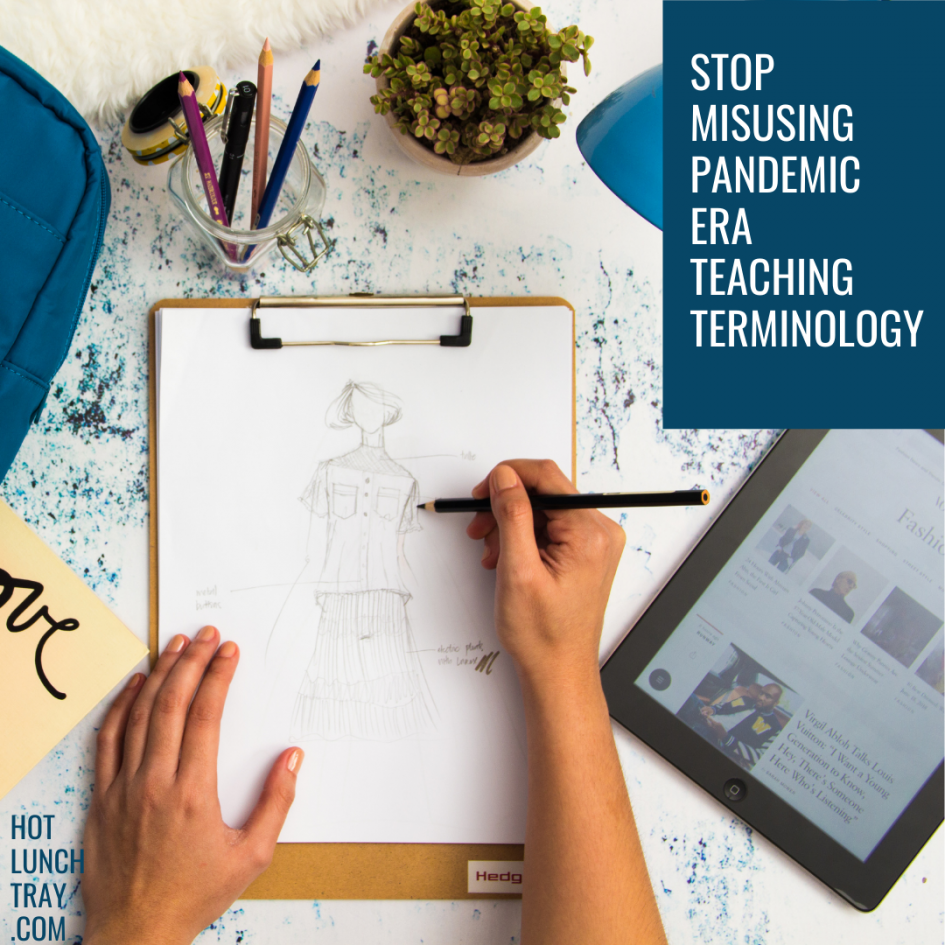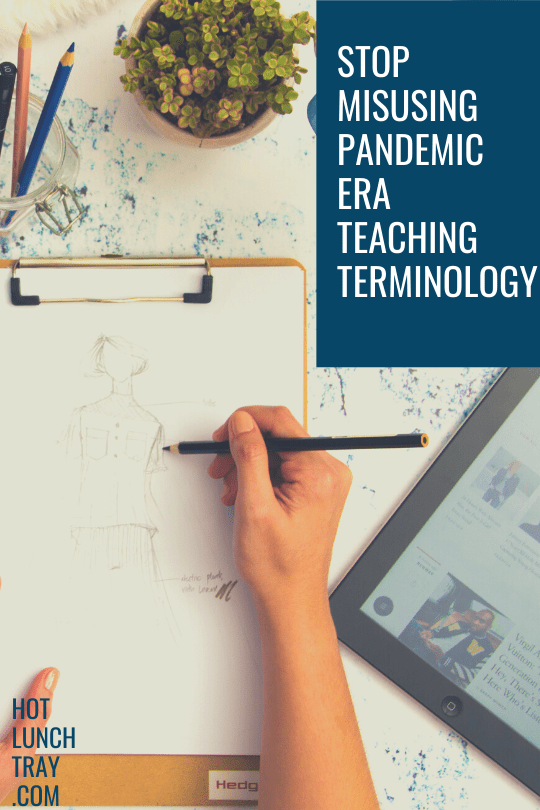The pandemic has been confusing enough.
The recklessness of educational terminology should not contribute to more confusion. Stop misusing pandemic era teaching terminology. Consider those relationships between these terms and correctly use the terms to contribute to transparency and not chaos.
Traditional Format
Pre-pandemic teaching was largely face-to-face, only ever called that to contract with the limited blended learning occurring in the past few years. Then the pandemic hit. After that new online variations were introduced to K12.
Contrasted to the first online variation of Emergency Remote, and then just online teaching, with occasion quarantine teaching was in-person teaching. In-person teaching was how schools denoted students who attended school in-person during the pandemic. An in-between format was a hybrid schedule that included in-person days interspersed with online days; this is a situational model and may disappear with the pandemic.
Online Variations
Back in 2015, I advised K12 teachers to Forget Online, Think Blended. That was a lifetime ago. My assumption at that time was online teaching (synonymous with distance learning) had the connotation of a prepared curriculum – this pandemic has proven that not to be the working model. Very few districts purchased content, very few made content for their teachers, most asked their classroom teachers to create it, as they went, during a pandemic. {Teacher talents and tolerance knows no end}
Quarantine teaching was short-term synchronous online webinar-style sessions, often with an in-person teacher. Because of the short duration, this was similar to the hybrid model, but was most definitely at a distance and so is categorized with online. Even though it does not have the asynchronous benefits of online learning more does it have the flexibility of blended learning with aspects of student control; this is a situational model and will disappear with the pandemic.
In-Between
If the traditional format of learning is all you have known, you would have a hard time understanding blended learning. And this is a positive aspect of the forced online variation we went through/are going through in K12 education right now! If all you knew was the traditional K12 format – the same also applies for only knowing the online variations – it would be difficult to fully appreciate a blended learning model.
By learning about online learning helps traditional educators design a blended version of their course(s) and vice versa.
I would not include a hybrid schedule in this definition of blended learning because the choices for pace, place, and path were still very rigid and mimicked in-person.
Families take their cues from educators on what to call educational initiatives. Do what you can to make this pandemic a little less confusing and stop misusing pandemic era teaching terminology.







1 Pingback